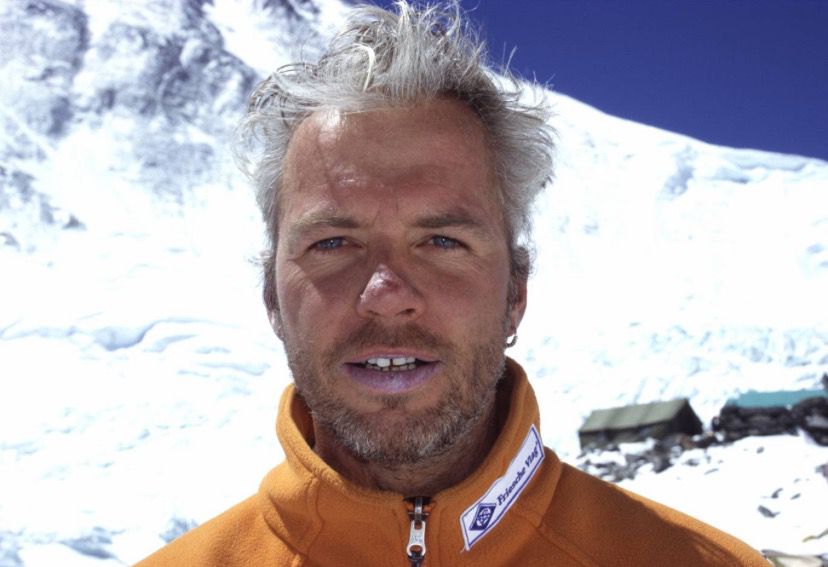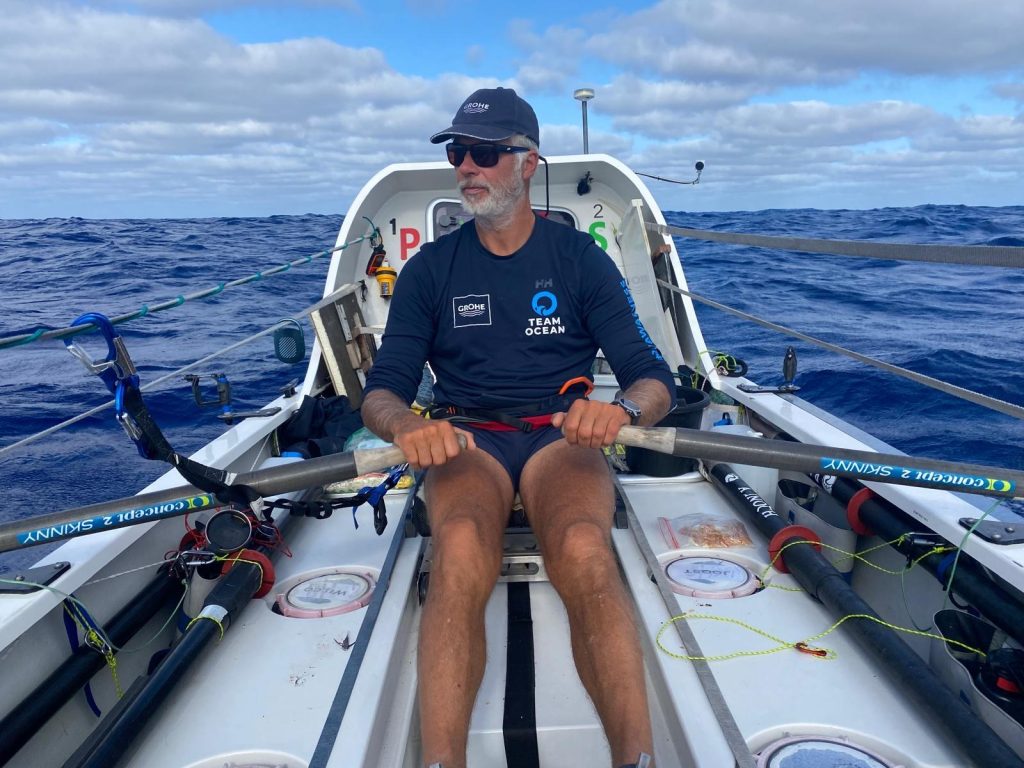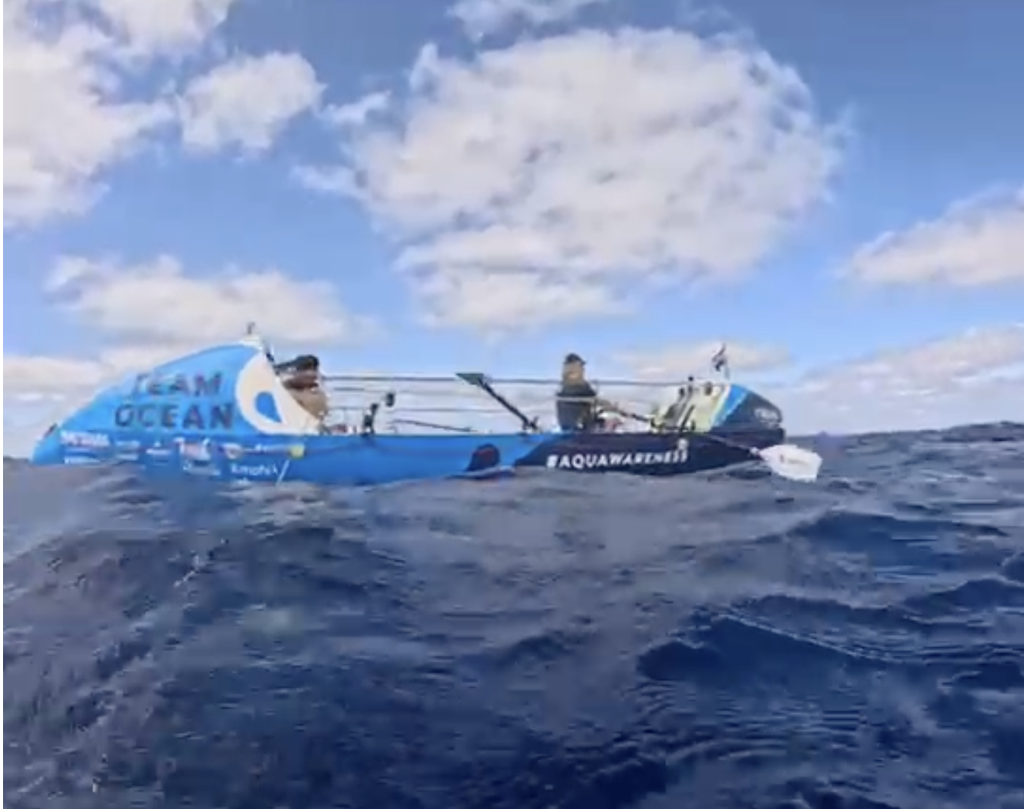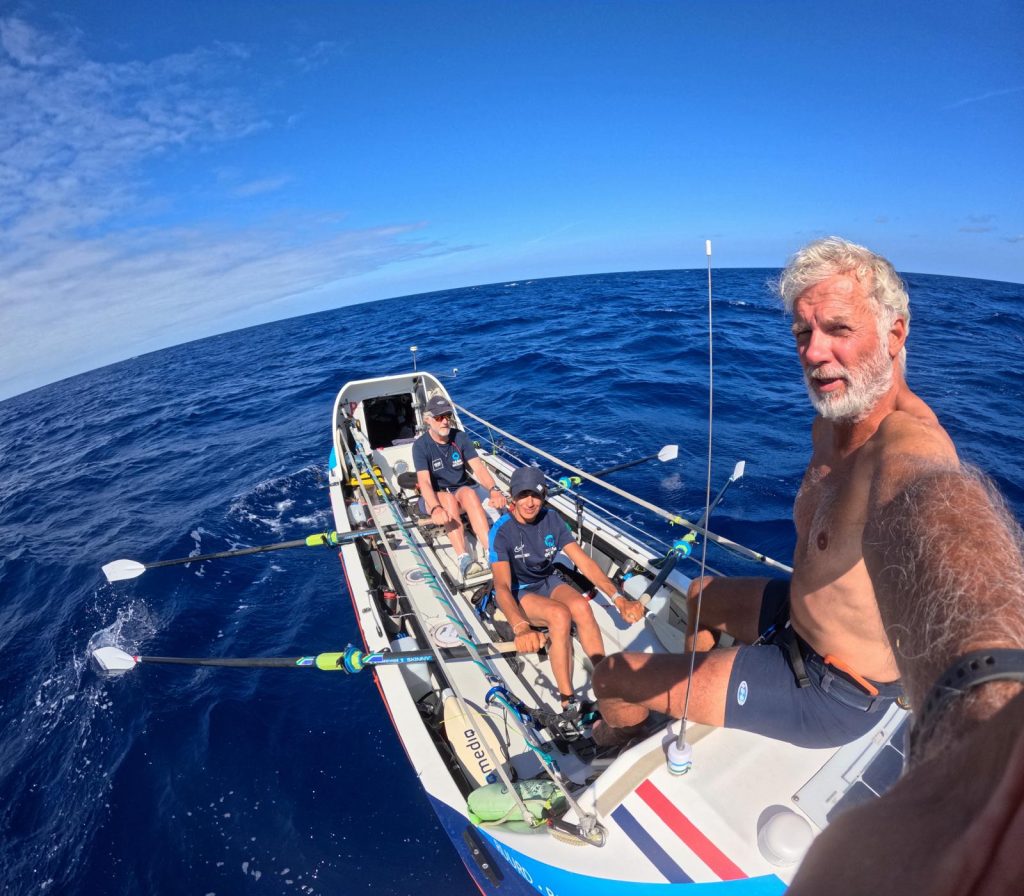Day 33: Position: N 23° 34.03′, W 151° 56.13′ | Speed/Course: 1.7 knots / 259°
Wilco van Rooijen has stood atop the highest points on Earth and trudged to its frozen ends – and now he’s testing himself against the vast Pacific Ocean. This Dutch adventurer is one of the world’s elite explorers, having summited Mount Everest and even the notorious K2 without supplemental oxygen .
He’s skied to the North Pole and South Pole on foot, becoming one of only about a dozen people ever to complete the full Explorers Grand Slam (the Seven Summits plus both poles) . After conquering thin air and polar ice, Wilco is now trading mountains for ocean waves, leading a daring rowing expedition across 2,800 miles of open Pacific waters.

Peak Achievements: Climbing the World’s Highest Mountains
By the time Wilco turned to ocean rowing, his mountaineering resume was already legendary. He reached the summit of Everest (8,848 m) in 2004 and later the summit of K2 (8,611 m) – the world’s second-highest and arguably most dangerous mountain – during the infamous 2008 K2 expedition, all without using supplemental oxygen . These feats put him in rare company.
He also completed the Seven Summits (scaling the highest peak on each continent) and trekked to the Geographic North Pole and South Pole under his own power, becoming the only Dutch person to ever accomplish this “Explorers Grand Slam” . In these high-altitude and polar adventures, Wilco honed an incredible tolerance for hardship: braving thin air, sub-zero temperatures, and unpredictable avalanches and storms. Each mountain taught him resilience and respect for nature’s extremes.
Yet, even for someone who has survived nights alone in the 8,000-meter “death zone,” the ocean presents a whole new kind of challenge. On a mountain, progress is vertical – you camp, acclimatize, and push toward a summit that you can eventually see and touch. There’s solid (if steep and icy) ground under your feet. In contrast, the ocean offers no firm ground or fixed goal in sight – only a tiny boat bobbing on a seemingly infinite expanse of waves. As Wilco himself has mused, “You can ski the Earth’s poles, climb the highest mountains or row the deepest oceans. All you need is endurance, willpower, and a good dose of craziness… Oh, and let’s not forget access to fresh water. Without [fresh] water, expeditions fail… life ends.” This perspective, earned through adventures on every extreme of the planet, is exactly what drives Wilco’s latest endeavor.
Trading Crampons for Oars: Rowing the Pacific Ocean
In May 2025, Wilco van Rooijen set off on his next audacious expedition – rowing across the Pacific Ocean from Monterey, California to Kauai, Hawaii. He and his two crewmates (Bela Evers and Ruurd Dasselaar) are tackling a non-stop, unsupported voyage of roughly 4,500 km (2,800 miles) across open water . They take turns rowing in shifts of about 2 hours on, 2 hours off, around the clock – a grueling schedule that means someone is always pulling at the oars, day and night. There are no rest days, no supply drops, and no shortcut home; a support boat isn’t trailing them, so they must be entirely self-sufficient for the over 40 days it will take to reach Hawaii.

Their 8-meter rowing boat, “Ambrosia,” is a far cry from the high camps of Everest, yet it must function as home, transportation, and lifeboat all in one. Everything the trio needs is packed on board, and every problem that arises – from equipment breakage to salt sores – must be solved in the middle of the ocean. Wilco’s team launched after waiting nearly two weeks for a safe weather window, knowing that once they left the California coast, they would immediately face the Pacific’s brute force . In fact, within hours of departure the ocean “welcomed” them with strong winds and towering waves. “A few hours after our departure, the ocean decided to welcome us with very heavy conditions – wind up to 30 knots and waves up to 8 m from the NW,” the team reported of their first days at sea . For about three days, gale-force gusts and 25+ foot waves pounded their vessel. All three rowers often had to struggle at the oars together just to keep the boat oriented, getting little sleep as the boat heaved and crashed through whitecaps . At one point they deployed a para-anchor (a sort of underwater parachute) to stabilize the boat and rode out over 10 hours of storm, snatching a bit of much-needed rest . It was a baptism by water unlike anything a mountaineer would experience on a peak – the ocean doesn’t “ease you in” gently. But surviving that opening gauntlet gave Wilco and his crew confidence in their vessel and in each other. “The bumpy ride of the first days has only strengthened our confidence in the boat and in each other,” they wrote as conditions finally calmed.
Equally important, this row is not just an adventure for adventure’s sake – it’s a mission dubbed “Row for #Aquawareness.” During the crossing, the crew is actively highlighting the value of something most people take for granted: clean drinking water. Surrounded by endless saltwater, they rely on a small desalination device (watermaker) to produce all the fresh water they need. In fact, to drive the point home, the three rowers intentionally limit themselves to just 6 liters of water per person per day . That 6 L has to cover everything – drinking, rehydrating freeze-dried meals, even a bit of hygiene – so conservation is key. The idea is to show that even during intense physical exertion in harsh conditions, humans can live on a modest amount of water. It’s a powerful contrast: on Everest expeditions, climbers might melt snow for water, limited chiefly by how much stove fuel they carry. In the middle of the Pacific, Wilco’s team literally makes water from seawater, underscoring how precious each liter is. “Every drop counts because we have no alternative to this precious resource,” their campaign reminds followers . After all, if a man can row an ocean on 6 liters a day, surely we land-dwellers can be more mindful of our own water use.

As of now, Wilco’s Pacific odyssey is in its final stretch. After more than a month at sea, the crew has rowed over 4,000 kilometers and is just about a week away from reaching Kauai, Hawaii. They’ve already endured and overcome so much. They’ve seen playful dolphins and even a curious whale that boosted their spirits in a low moment – experiences few ever have outside of documentaries. They celebrated a crew member’s birthday in mid-ocean with a “promised” tuna sashimi (if the fishing line caught anything) , adding a bit of humor to break up the long monotony of rowing. They’ve also dealt with painful blisters, salt rashes, and muscle soreness from the perpetual motion of rowing . But spirits remain high on board Ambrosia. Each day, they log their position and progress, knowing the Hawaiian finish line grows nearer. And once they do arrive, Wilco being Wilco, he isn’t planning to simply rest on the beach – he aims to cap off the journey by climbing one of Hawaii’s highest volcanoes (Mauna Kea, ~4,205 m) to symbolically connect sea level to summit in one grand adventure . It’s the ultimate “from ocean to mountaintop” finale that perfectly suits his life story.

